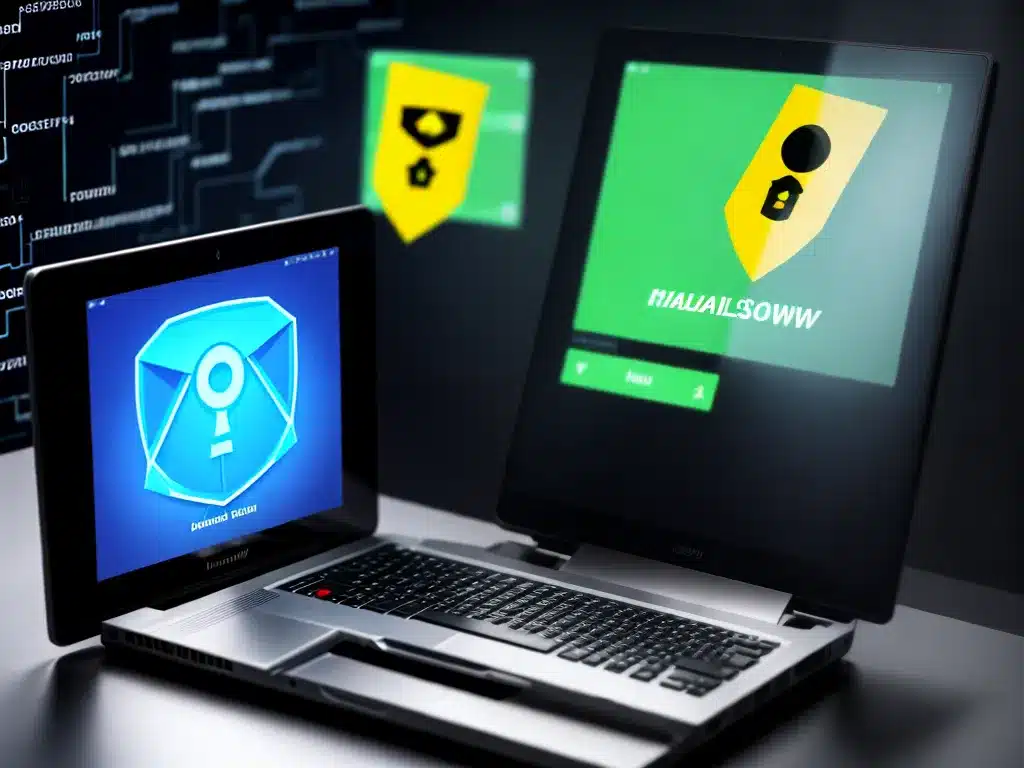Introduction
Malware and ransomware are serious cybersecurity threats that can infect computers and mobile devices and cause major headaches for users. As cybercriminals become more sophisticated, new malware and ransomware variants are constantly emerging. I’ll provide an in-depth look at how these threats work, how to detect if your devices are infected, and the steps you need to take to fully remove malware and ransomware.
What is Malware?
Malware is an umbrella term for various types of malicious software that cybercriminals use to infect devices and systems. Malware includes viruses, worms, trojans, spyware, adware, and more. The main goal of malware is to damage, disrupt, or gain unauthorized access to computers and networks.
Some common signs your device may be infected with malware include:
- Unusually slow performance
- Frequent crashes or freezes
- Lots of unwanted pop-ups
- New toolbars or browser add-ons
- Problems connecting to websites
- Antivirus program disabled without your doing
Malware can arrive through various vectors like infected email attachments, malicious ads or links, infected devices, and pirated or cracked software. Once installed, malware can delete files, spy on your activity, install additional malicious programs, and compromise your privacy and security.
Understanding Ransomware
Ransomware is a particularly nasty type of malware that locks or encrypts your files and demands payment for their release. The cybercriminals behind ransomware extort money from victims by asking for ransoms, usually in cryptocurrency like Bitcoin.
Some telltale signs of a ransomware infection include:
- Being unable to access certain files and getting ransom notes or text boxes explaining payment demands
- File extensions changed to something like .encrypted or .locky
- Computer locking up and only showing a ransom message
- Ransom amount demanded and Bitcoin payment instructions
Ransomware often spreads through phishing emails with infected attachments or boobytrapped website ads. Once it takes hold, ransomware can rapidly infect networks via shared directories and drives. Paying the ransom is very risky though, as you’d be funding criminal organizations and there’s no guarantee you’d get your files back.
Detecting Malware and Ransomware
Here are some tips for detecting and identifying malware or ransomware infections:
Use Antivirus Software
Having a reputable antivirus program installed is critical for detecting many types of malware before they can do harm. Make sure your real-time antivirus scanning is enabled to catch threats as they appear. As new malware variants emerge, antivirus vendors frequently update virus definitions, so keep your software updated.
Monitor for Unusual Activity
Carefully monitor your computer or device for any of the unusual activity described earlier like crashes, slowness, and strange pop-ups. Unexpected spikes in internet usage, especially uploads, could indicate malware activity.
Inspect Running Processes
Use the Task Manager on Windows or Activity Monitor on Mac to view all running processes. Check for any unfamiliar or suspicious looking processes and research them online. Legitimate antivirus software will show up here.
Examine Browser Extensions
Check your web browser extensions and remove any you don’t remember installing or that seem questionable. Malware often installs unwanted add-ons.
Scan for Unauthorized Apps
On smartphones, inspect your app list for any apps you don’t recall downloading. Malware can sometimes install disguised malicious apps.
Use Malware Scanners
If you suspect an infection, run a dedicated malware scanner like Malwarebytes. This can often detect malware that standard antivirus software misses.
Restore From Backup
For ransomware in particular, one way to recover your files without paying is to restore your system from a backup created before the infection happened. Make regular backups to protect your data.
Removing Malware and Ransomware
If you discover signs of malware or ransomware, here are the steps to fully remove the infection:
1. Disconnect from Networks
If connected to any networks, unplug your infected computer’s ethernet cable and disconnect it from Wi-Fi. This prevents the malware from spreading or communicating further.
2. Boot in Safe Mode
Restart your computer in Safe Mode, which loads only essential drivers and services. This prevents malware from loading automatically.
3. Run Security Scans
Run updated malware/antivirus scans to detect and quarantine infections. Use multiple programs like Windows Defender, Malwarebytes, and HitmanPro to scan thoroughly.
4. Delete Malicious Files
Carefully go through detected malware/ransomware files or processes and delete them. Backup any needed personal files first. Avoid clicking or opening suspicious files.
5. Remove Harmful Registry Entries
Malware often adds damaging registry entries. Use a registry cleaner tool to find and remove any harmful entries left behind.
6. Change Passwords
Since malware may have captured passwords or login data, change passwords for all of your online accounts after removing the infections.
7. Update Software
Make sure your operating system, antivirus software, browsers, and other programs are all fully updated, as patches fix security vulnerabilities malware exploits.
Protecting Yourself in the Future
Here are some final tips to enhance your future security:
- Install comprehensive antivirus software like Norton or BitDefender and keep it routinely updated.
- Regularly backup important files and systems to enable restores after infections.
- Avoid downloading random programs or opening attachments from unknown sources.
- Make sure your software is always patched and use a firewall.
- Use ad-blocking and anti-tracking browser extensions when surfing the web.
- Never click suspicious links in emails, chats, ads or websites.
- Use strong, unique passwords for all accounts and enable two-factor authentication when possible.
- Exercise caution when installing new programs or browser extensions.
Staying vigilant is key to avoiding falling victim to the latest malware and ransomware threats. Take measures to harden your systems and routinely scan for any signs of infection. If malware strikes, isolate your device and thoroughly remove all traces of the infection to get your computer or smartphone healthy again. Avoiding paying ransoms supports the fight against cybercrime.












